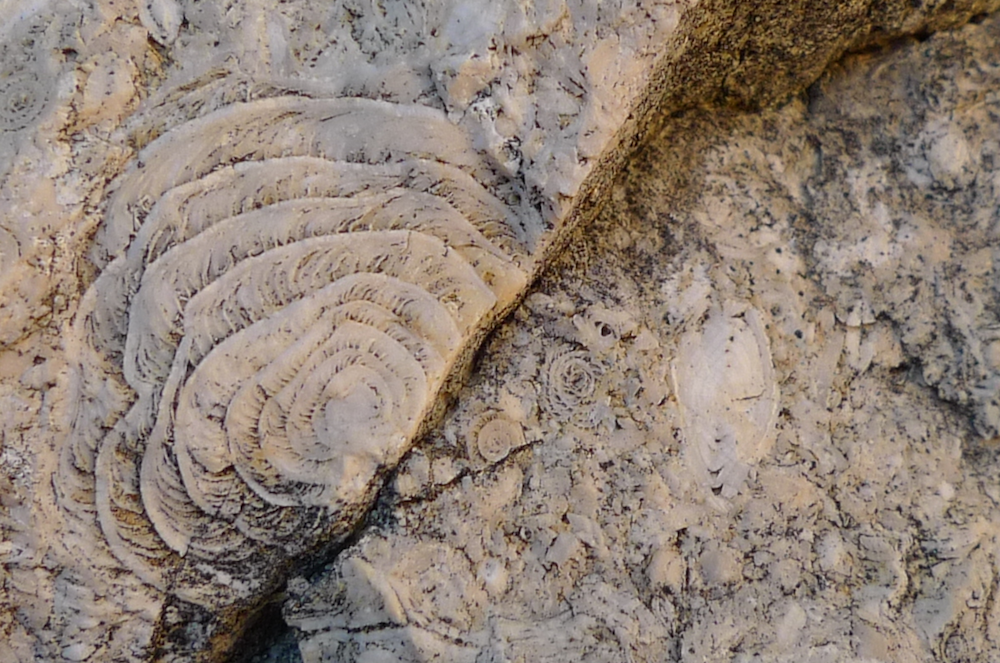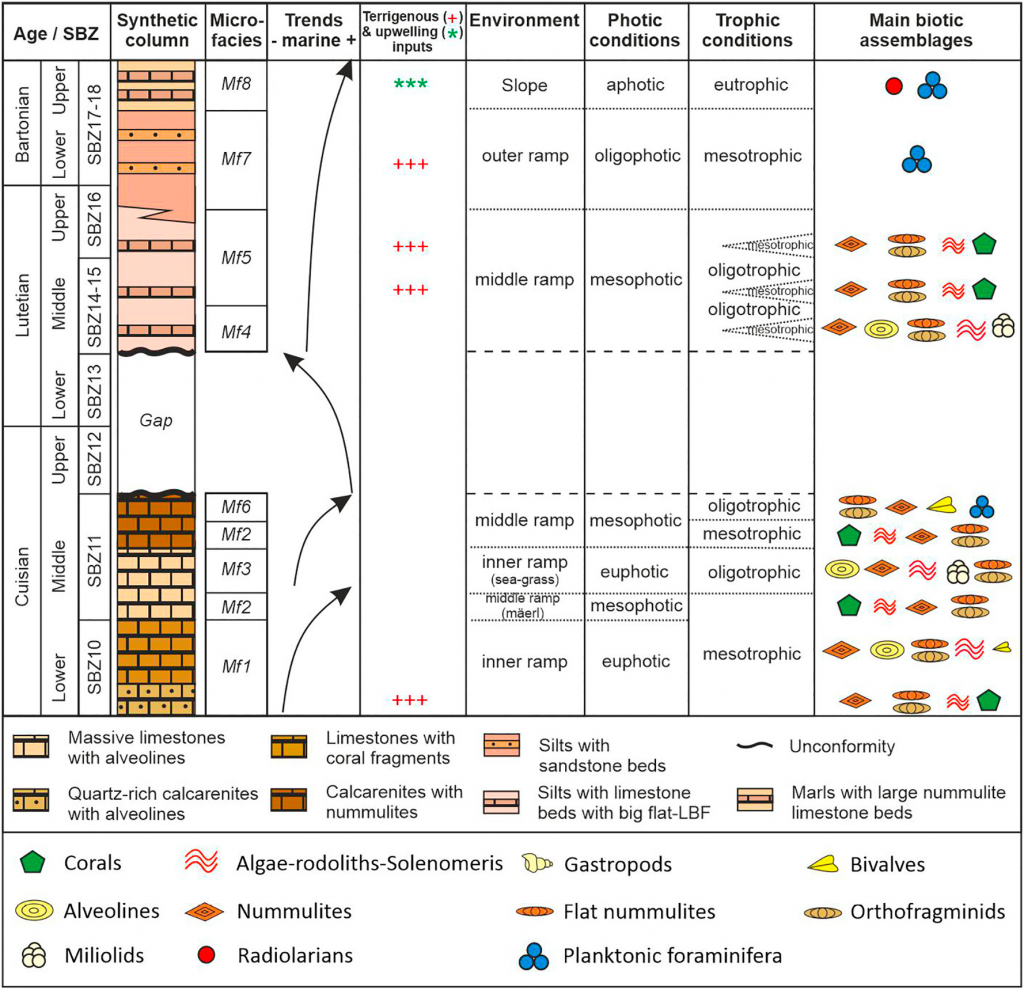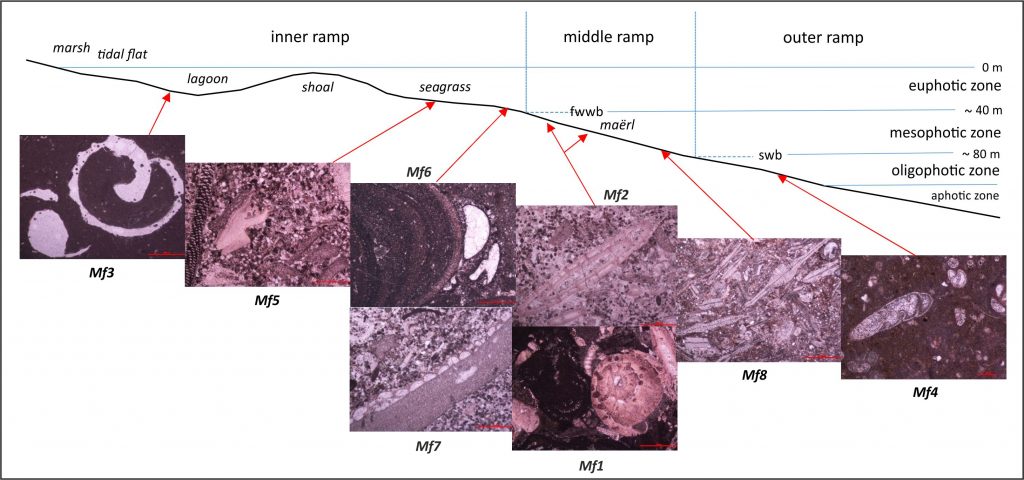Home » Posts tagged 'larger benthic foraminifera'
Tag Archives: larger benthic foraminifera
New biostratigraphic data on the Paleocene-Eocene from the Prebetic
A biostratigraphic study of the Paleocene-Eocene of the stratigraphically continuous with the northern foreland (Iberian Meseta), Prebetic has been studied by using planktonic foraminifera, calcareous nannoplankton, and larger benthic foraminifera. Twelve sections have been studied along the chain: four sections in the Alicante Sector, four in the Murcia Sector, two in the Granada Sector, and two sections in the Jaén Sector.
The Paleocene-Eocene Prebetic succession can be divided into three stratigraphic formations related by lateral and diachronic changes of facies: limestones and calcarenites (rich in larger benthic foraminifera) in middle stratigraphic position, and two marly-clayey formations in lower and upper positions, respectively. The middle unit represents an internal marine platform, while the two marly-clayey represent the external platform (and the upper slope in a few cases). As a whole, above the unconformity, representing the missing interval which includes the Cretaceous-Paleocene boundary.

Cite as: Martín-Martín, M., Miclăuș, C., Serrano, F., Tosquella, J., Samsó, J.M., Tent-Manclús, J.E., and Martín-Pérez, J.A. (2023): New biostratigraphic data on the Paleocene-Eocene succession from the Prebetic domain (Betic Cordillera: South Spain).Abstract Book, Fourteenth Romanian Symposium on Palaeontology, Bucharest, 14-15 September 2023 / Zoltán Csiki-Sava, Alina Floroiu, Maria-Raluca Văcărescu, Iuliana Lazăr – Bucureşti : Editura Universităţii din Bucureşti -Bucharest University Press, 2023, 79-80 p.
Eocene carbonate platform of the Malaguides of the westermost Tethys
The Eocene Peñicas (Almería) and Harania (Málaga) stratigraphic sections from the Malaguide Complex (Betic Cordillera, South Spain) belonging to the Mesomediterranean Microplate from the westernmost Tethys (about 35◦N) have been studied. The Eocene sections cover the Cuisian to middle Lutetian deposits, which show several lithofacies representing shallow marine platform realms. Based on the fossiliferous assemblage, texture and fabrics, eight microfacies related to inner to outer ramp settings were defined. In the inner ramp of the Harania section abundant colonial corals have been recognized. The Eocene deposits are arranged into a transgressive succession composed by three minor transgressive-regressive sedimentary cycles. The Eocene fossiliferous assemblage shows a mixture of photozoan (Larger Bentic Foraminifera, green and red calcareous algae and corals) and heterotrophic (mollusks, echinoids, bryozoans, small benthic and planktic foraminifers) elements, suggesting euphotic to mesophotic conditions in oligo-mesotrophic marine warm-waters at low-middle latitudes. This assemblage indicates a transition from photozoan to heterozoan carbonates and in particular a shift towards outer marine ramp settings.

During the Early Eocene, the widespread distribution of Larger Benthic Foraminifera leads in the Tethyan domains to disappearance or extreme reduction of coral constructions. Nevertheless, abundant corals associated to inner ramp realms have been observed in the Harania stratigraphic section indicating that corals could continue to develop in the westernmost Tethys at the transition to the Atlantic Ocean, in contrast with respect to other Tethyan sectors. Therefore, the Ypresian-Lutetian time-span is a transitional period for the global temperature during which corals locally survived only where optimal ecologic conditions occurred, preferably in marginal contexts, as it seems to have happened in the studied area.



Recent Comments